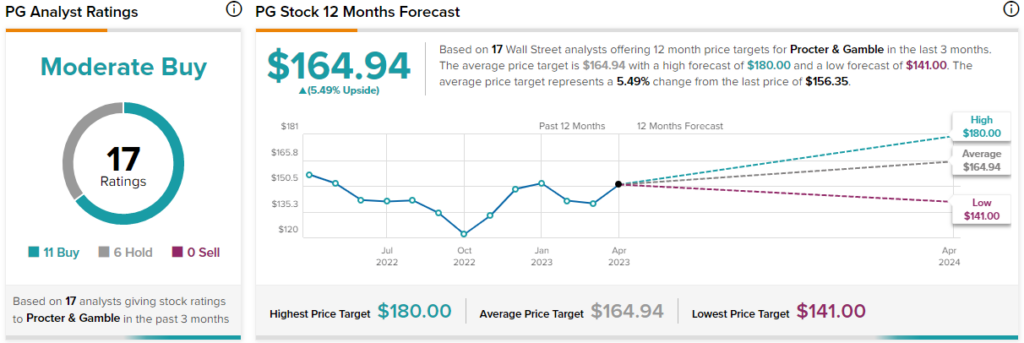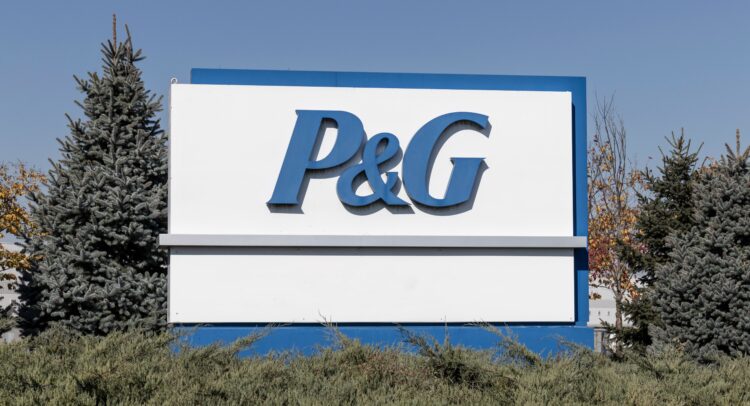Procter & Gamble (NYSE:PG) just reported strong Q3 earnings on April 21, setting the stage for record earnings this fiscal year. That said, with investors flocking to P&G’s secure investment case in recent months, shares are still trading at a sky-high valuation multiple. Further, while P&G’s legendary dividend remains solid, its growth has slowed down dramatically in recent quarters.
Pick the best stocks and maximize your portfolio:
- Discover top-rated stocks from highly ranked analysts with Analyst Top Stocks!
- Easily identify outperforming stocks and invest smarter with Top Smart Score Stocks
The possibility of a correction in the stock’s valuation combined with decelerating capital returns could potentially indicate a lack of meaningful upside, moving forward. Therefore, I am neutral on P&G despite the company’s robust results.

P&G’s Fiscal Q3 Results: An Up-Close Review
While the current market environment is taking its toll on most companies, Procter & Gamble once again demonstrated in its fiscal Q3 results that it can navigate the ongoing macroeconomic turmoil with ease. Despite facing foreign exchange pressures and rising interest rates, P&G showcased its ability to overcome these obstacles. This is, of course, thanks to its unparalleled brand base, which includes 65 household names that tend to generate resilient sales under various economic landscapes.
Particularly, the company posted net sales of $20.1 billion, 4% higher year-over-year, as organic growth, which includes higher pricing, more than offset the negative FX impacts and other one-off events such as acquisitions and divestitures the company experienced. In fact, excluding such elements, P&G’s sales would have grown by 7%.
To be more specific, this 7% increase was sourced from a 10% increase from higher pricing and a 1% increase from an advantageous product mix, partially neutralized by a 3% reduction in shipment volumes. Therefore, although some consumers expressed dissatisfaction with P&G’s inflexible pricing strategy, the fact that the decrease in the volumes of products shipped was proportionally lower than the increase in prices indicates that P&G’s goods are remarkably resistant to inflation and have a high degree of inelasticity.
Furthermore, P&G’s pricing power and general gross productivity savings boosted the company’s gross profit margins by 470 bps (basis points) and 210 bps, respectively. While these benefits were partially offset by a 270 bps increase in commodity and input material costs, a 140 bps increase in negative product mix, and a 50 bps increase in product reinvestments, gross profit margins still managed to expand by 150 bps (220 bps in constant currency).
Overall, higher sales, improved margins, and a lower share count were somewhat offset by interest expenses more than doubling as a result of rising interest rates. Still, earnings per share in Q3 did grow by 3% to $1.37.
Most importantly, management raised its guidance for Fiscal 2023, which implies an even stronger Q4. Management now expects all-in sales to increase by about 1% versus Fiscal 2022, up from the prior guidance range of -1% to 0% growth. Earnings per share are still expected to grow by between 0% to 4% from last year’s $5.81.
Is P&G’s Dividend Growth Slowing Down?
P&G features a legendary dividend growth track record, boasting 67 years of consecutive annual dividend increases. Along with its fiscal Q3 results, the company once again hiked its dividend, but this time, by a mere 3%. This implies continuous deceleration from the previous two hikes, which were by 5% and 10%. It is indeed an underwhelming development, especially since this rate is way below the rate of inflation, meaning investors’ income can’t keep up.
However, it’s important to note that management’s cautious approach to dividend growth is not a reflection of the company’s financial capacity. In fact, according to P&G’s guidance, the forward payout ratio currently stands at 65%, leaving ample room for future hikes. Besides, a deceleration in dividend growth occurred in the past when the company was navigating tough market environments before eventually re-accelerating its growth.
Thus, dividend increases averaging in the mid-single digits moving forward, in line with P&G’s historical average, sounds like a reasonable hypothesis.
Is PG Stock a Buy, According to Analysts?
Turning to Wall Street, Procter & Gamble has a Moderate Buy consensus rating based on 11 Buys and six Holds assigned in the past three months. At $164.94 the average Procter & Gamble stock price target implies 5.5% upside potential.

The Takeaway
In my view, PG stock isn’t really worth considering today. Yes, the company posted strong fiscal Q3 results, paving the way for another year of record-breaking earnings per share. That said, with shares surging in recent weeks, P&G’s valuation disparity has yet to be addressed. Assuming the company achieves 2% growth in earnings per share this year, which is the midpoint of management’s guidance, shares are currently trading at a forward P/E ratio of 26.4 (implying a 3.8% earnings yield).
While a premium multiple can be justified in the case of P&G, given the company’s numerous qualities and recession-proof traits, this is certainly a rich one in the face of rising interests. Add the fact that dividend growth has also decelerated, and investors may have no margin of safety against a potential correction in the stock’s valuation. Hence, I would be skeptical about buying PG stock at its current levels.



















